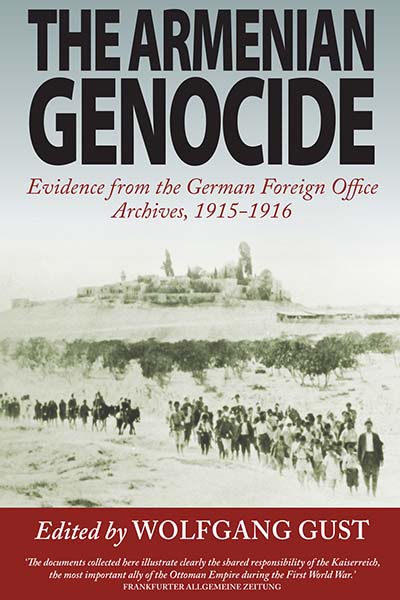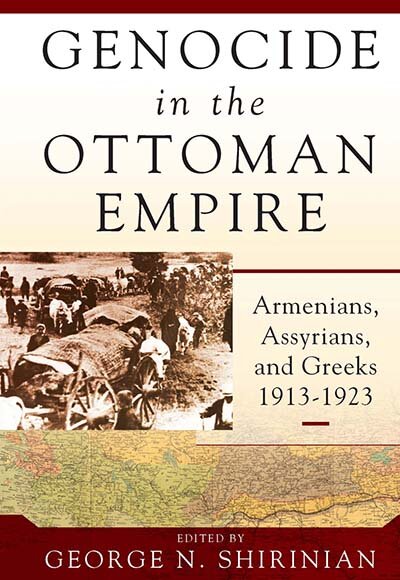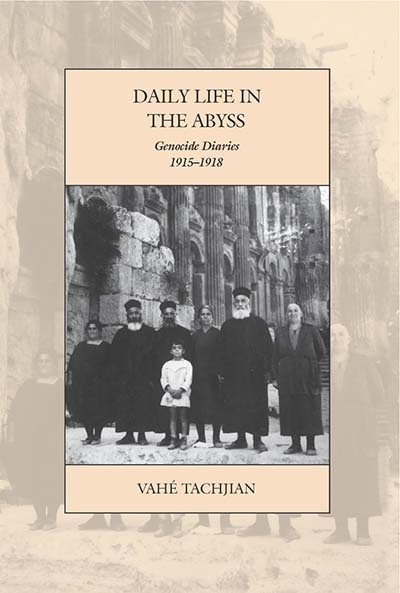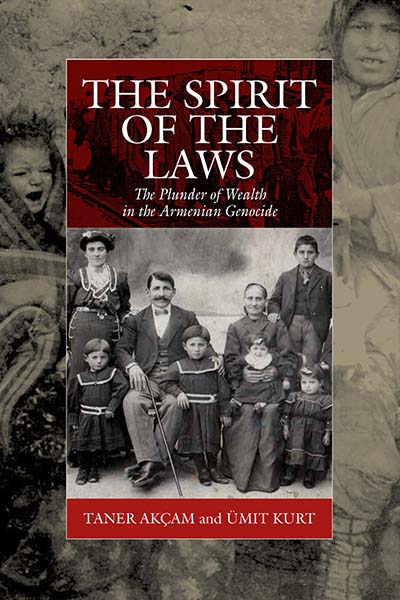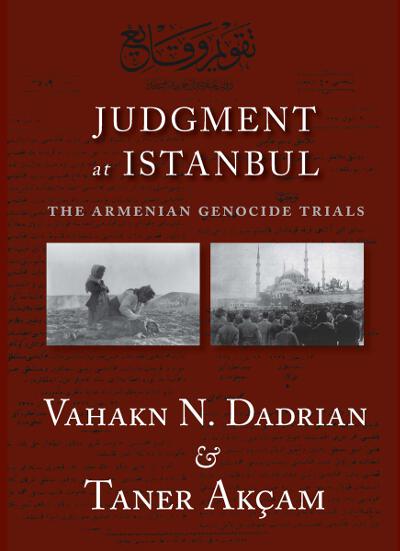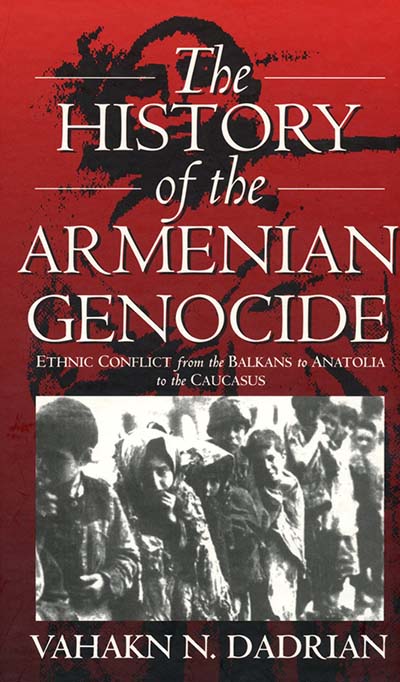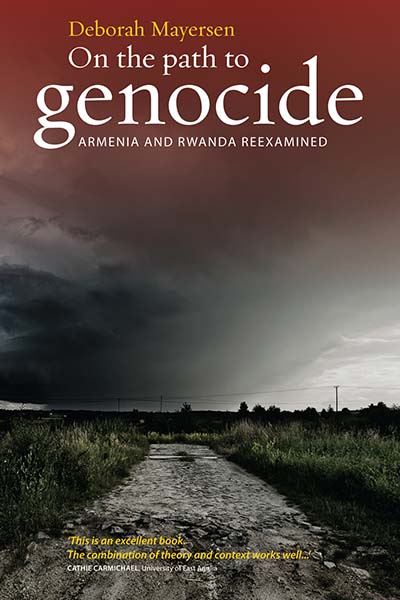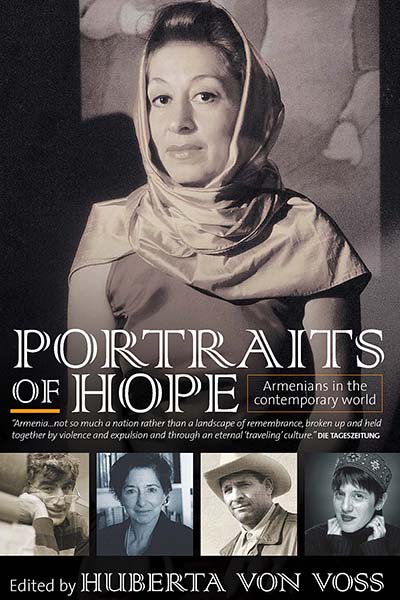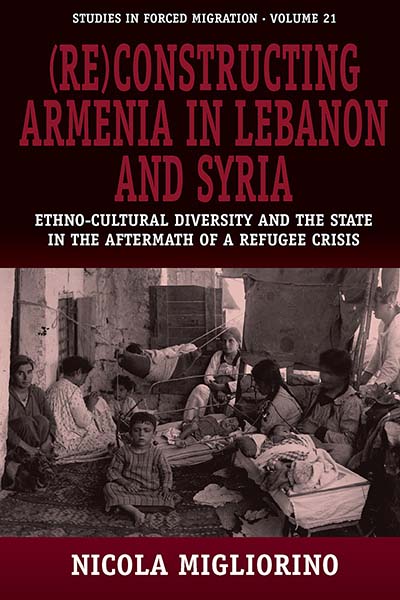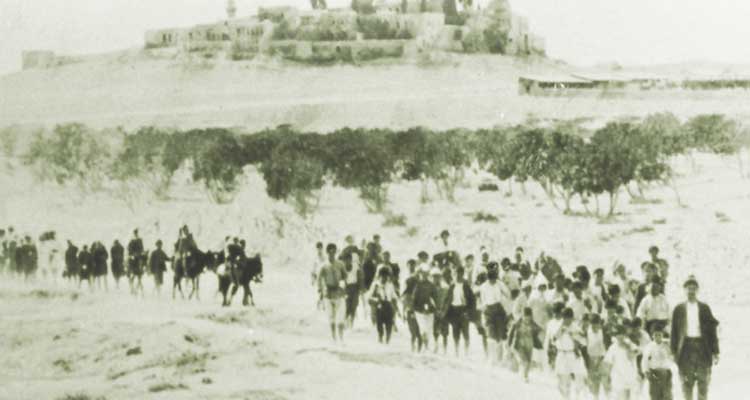
10/31/19
Yesterday the US House of Representatives voted to recognize the mass killing of Armenians by Ottoman Turks during World War One as a genocide. Learn more about the Armenian Genocide by browsing the titles below. Visit our Genocide Studies page for more titles and sign up to receive subject-specific updates here.
THE ARMENIAN GENOCIDE
Evidence from the German Foreign Office Archives, 1915-1916
Compiled and Edited by Wolfgang Gust
Translated from the German
Foreword by Vahakn N. Dadrian
“…this massive volume contains the only English-language translation of 240 primary documents found in German Foreign Office files. A very extensive overview section provides superb historical background, especially concerning the German involvement.” • Choice
In 1915, the Armenians were exiled from their land, and in the process of deportation 1.5 million of them were killed. The 1915-1916 annihilation of the Armenians was the archetype of modern genocide, in which a state adopts a specific scheme geared to the destruction of an identifiable group of its own citizens. Official German diplomatic documents are of great importance in understanding the genocide, as only Germany had the right to report day-by-day in secret code about the ongoing genocide. The motives, methods, and after-effects of the Armenian Genocide echoed strongly in subsequent cases of state-sponsored genocide. Studying the factors that went into the Armenian Genocide not only gives us an understanding of historical genocide, but also provides us with crucial information for the anticipation and possible prevention of future genocides.
GENOCIDE IN THE OTTOMAN EMPIRE
Armenians, Assyrians, and Greeks, 1913-1923
Edited by George N. Shirinian
“This is a very timely edited volume that will fill a very significant gap in the study of Greek, Assyrian, Armenian, and Turkish history on the one hand, and, on the other, provide an analysis of the collective violence these non-Muslim minorities had been subjected to in the Ottoman Empire and later on… I heartily recommend this book to scholars interested in the histories of these communities as well as the Ottoman Empire and Turkish Republic; genocide scholars would also benefit from the novel framework of studying the collective violence against Greeks, Armenians, and Assyrians together, from a single comparative vantage point as late Ottoman genocides.” • Slavic Review
The final years of the Ottoman Empire were catastrophic ones for its non-Turkish, non-Muslim minorities. From 1913 to 1923, its rulers deported, killed, or otherwise persecuted staggering numbers of citizens in an attempt to preserve “Turkey for the Turks,” setting a modern precedent for how a regime can commit genocide in pursuit of political ends while largely escaping accountability. While this brutal history is most widely known in the case of the Armenian genocide, few appreciate the extent to which the Empire’s Assyrian and Greek subjects suffered and died under similar policies. This comprehensive volume is the first to broadly examine the genocides of the Armenians, Assyrians, and Greeks in comparative fashion, analyzing the similarities and differences among them and giving crucial context to present-day calls for recognition.
Read Introduction
DAILY LIFE IN THE ABYSS
Genocide Diaries, 1915-1918
Vahé Tachjian
Vol. 25, War and Genocide
“Vahé Tachjian has written a thoughtful, nuanced and powerful study of survival.” • European History Quarterly
Historical research into the Armenian Genocide has grown tremendously in recent years, but much of it has focused on large-scale questions related to Ottoman policy or the scope of the killing. Consequently, surprisingly little is known about the actual experiences of the genocide’s victims. Daily Life in the Abyss illuminates this aspect through the intertwined stories of two Armenian families who endured forced relocation and deprivation in and around modern-day Syria. Through analysis of diaries and other source material, it reconstructs the rhythms of daily life within an often bleak and hostile environment, in the face of a gradually disintegrating social fabric.
Read Introduction
THE SPIRIT OF THE LAWS
The Plunder of Wealth in the Armenian Genocide
Taner Akçam and Umit Kurt
Translated by Aram Arkun
Vol. 21, War and Genocide
“This book is a valuable addition to filling the gaps of our understanding of genocide and helps readers navigate complex terrain in the case study presented”
• Histoire Sociale/Social History
Pertinent to contemporary demands for reparations from Turkey is the relationship between law and property in connection with the Armenian Genocide. This book examines the confiscation of Armenian properties during the genocide and subsequent attempts to retain seized Armenian wealth. Through the close analysis of laws and treaties, it reveals that decrees issued during the genocide constitute central pillars of the Turkish system of property rights, retaining their legal validity, and although Turkey has acceded through international agreements to return Armenian properties, it continues to refuse to do so. The book demonstrates that genocides do not depend on the abolition of the legal system and elimination of rights, but that, on the contrary, the perpetrators of genocide manipulate the legal system to facilitate their plans.
Read Introduction
JUDGMENT AT ISTANBUL
The Armenian Genocide Trials
Vahakn N. Dadrian and Taner Akçam
“This book stands as a monument of original scholarship on the facts of the Genocide. The wealth of specific citations, the multiplicity of sources surveyed make this volume an invaluable and fundamental source for any future study.” • The Armenian Mirror-Spectator
This book provides vital background information and is a prime source of legal evidence and authentic Turkish eyewitness testimony of the intent and the crime of genocide against the Armenians. After a long and painstaking effort, the authors, one an Armenian, the other a Turk, generally recognized as the foremost experts on the Armenian Genocide, have prepared a new, authoritative translation and detailed analysis of the Takvim-i Vekâyi, the official Ottoman Government record of the Turkish Military Tribunals concerning the crimes committed against the Armenians during World War I. The authors have compiled the documentation of the trial proceedings for the first time in English and situated them within their historical and legal context. These documents show that Wartime Cabinet ministers, Young Turk party leaders, and a number of others inculpated in these crimes were court-martialed by the Turkish Military Tribunals in the years immediately following World War I. Most were found guilty and received sentences ranging from prison with hard labor to death. In remarkable contrast to Nuremberg, the Turkish Military Tribunals were conducted solely on the basis of existing Ottoman domestic penal codes. This substitution of a national for an international criminal court stands in history as a unique initiative of national self-condemnation. This compilation is significantly enhanced by an extensive analysis of the historical background, political nature and legal implications of the criminal prosecution of the twentieth century’s first state-sponsored crime of genocide.
THE HISTORY OF THE ARMENIAN GENOCIDE
Ethnic Conflict from the Balkans to Anatolia to the Caucasus
Vahakn N. Dadrian
“… totally innovative … Dadrian exhibits exemplary objectivity and provides us with the fruits of a life of scholarship and research. An inestimable contribution to our knowledge of history.” • Journal of the Society of Armenian Studies
The Armenian Genocide, though not given such prominent treatment as the Jewish Holocaust which it precedes, still haunts the Western world and has assumed a new significance in the light of “ethnic cleansing” in Bosnia and, more recently, Darfur. This study by the most distinguished scholar of the Armenian tragedy offers an authoritative analysis by presenting it as a case study of genocide and by seeing it as an historical process in which a domestic conflict escalated and was finally consumed by global war.
ON THE PATH TO GENOCIDE
Armenia and Rwanda Reexamined
Deborah Mayersen
“Mayersen has written a fine text… Ultimately, Mayersen concludes that genocides are ‘fundamentally preventable’ and offers insights into prevention. The text is well organized, thoroughly researched, and brings to bear important new perspectives on genocide studies. – Highly recommended.” • Choice
Why did the Armenian genocide erupt in Turkey in 1915, only seven years after the Armenian minority achieved civil equality for the first time in the history of the Ottoman Empire? How can we explain the Rwandan genocide occurring in 1994, after decades of relative peace and even cooperation between the Hutu majority and the Tutsi minority? Addressing the question of how the risk of genocide develops over time, On the Path to Genocide contributes to a better understand why genocide occurs when it does. It provides a comprehensive and comparative historical analysis of the factors that led to the 1915 Armenian genocide and the 1994 genocide in Rwanda, using fresh sources and perspectives that yield new insights into the history of the Armenian and Rwandan peoples. Finally, it also presents new research into constraints that inhibit genocide, and how they can be utilized to attempt the prevention of genocide in the future.
Read Introduction
PORTRAITS OF HOPE
Armenians in the Contemporary World
Edited by Huberta von Voss
With a Preface by Yehuda Bauer, Jerusalem
“…certainly a well-put together and edited compendium of Armenian socio-political and cultural essays …And it has a great deal to offer both the educated and altruistic reader alike about the passionate and fatalistic woven threads that compose Armenian life and identity today.” • Armenian Weekly
Elie Wiesel called the genocide of the Armenians during the First World War ‘the Holocaust before the Holocaust’. Around one and a half million Armenians – men, women and children – were slaughtered at the time of the First World War. This book outlines some of the historical facts and consequences of the massacres but sees it as its main objective to present the Armenians to the foreign reader, their history but also their lives and achievements in the present that finds most Armenians dispersed throughout the world. 3000 years after their appearance in history, 1700 years after adopting Christianity and almost 90 years after the greatest catastrophe in their history, these 50 ‘biographical sketches of intellectuals, artists, journalists, and others…produce a complicated kaleidoscope of a divided but lively people that is trying once again, to rediscover its ethnic coherence. Armenian civilization does not consist solely of stories about a far-off past, but also of traditions and a national conscience suggestive of a future that will transcend the present.
(RE)CONSTRUCTING ARMENIA IN LEBANON AND SYRIA
Ethno-Cultural Diversity and the State in the Aftermath of a Refugee Crisis
Nicola Migliorino
Vol. 21, Forced Migration
“… an impressively researched account of one of the major refugee crises of the 20th century … Migliorino offers a thoughtful account of the Armenian refugees’ experience, focusing on religion, cultural production, and communal political organization and covering 1923-2003, a span of three or four generations. This is an analytical narrative of the making of a society, from refugees to citizens… this fine historical account is also an exemplary developmental study of the ways in which refugees create a permanent diaspora society. Relevant to all social scientists. Highly recommended.” • Choice
For almost nine decades, since their mass-resettlement to the Levant in the wake of the Genocide and First World War, the Armenian communities of Lebanon and Syria appear to have successfully maintained a distinct identity as an ethno-culturally diverse group, in spite of representing a small non-Arab and Christian minority within a very different, mostly Arab and Muslim environment. The author shows that, while in Lebanon the state has facilitated the development of an extensive and effective system of Armenian ethno-cultural preservation, in Syria the emergence of centralizing, authoritarian regimes in the 1950s and 1960s has severely damaged the autonomy and cultural diversity of the Armenian community. Since 1970, the coming to power of the Asad family has contributed to a partial recovery of Armenian ethno-cultural diversity, as the community seems to have developed some form of tacit arrangement with the regime. In Lebanon, on the other hand, the Armenian community suffered the consequences of the recurrent breakdown of the consociational arrangement that regulates public life. In both cases the survival of Armenian cultural distinctiveness seems to be connected, rather incidentally, with the continuing ‘search for legitimacy’ of the state.
Follow us on Social Media
For updates on our Genocide Studies offerings as well as all other developments from Berghahn, sign up for customized e-Newsletters, become a Facebook fan, or follow us on Twitter.

